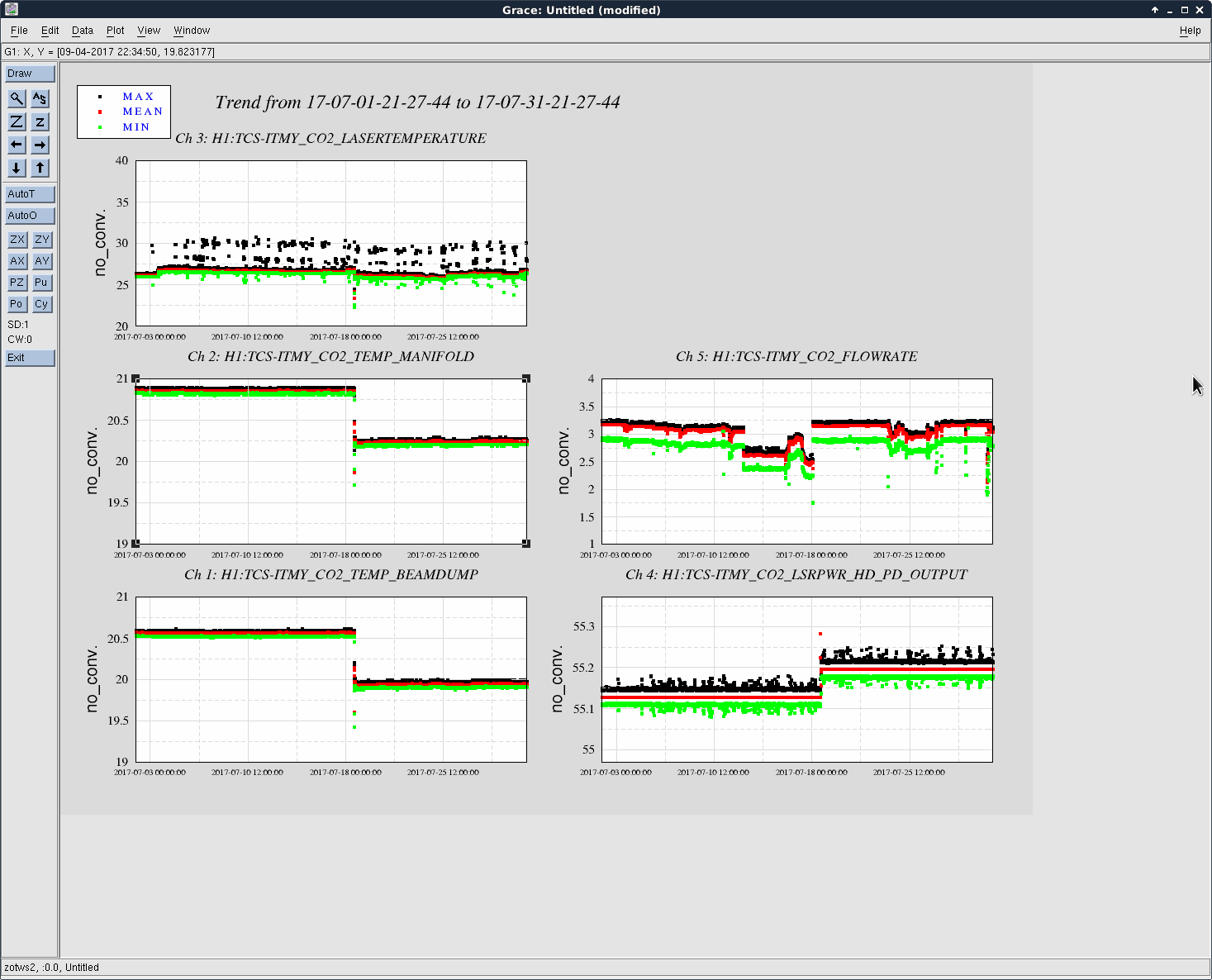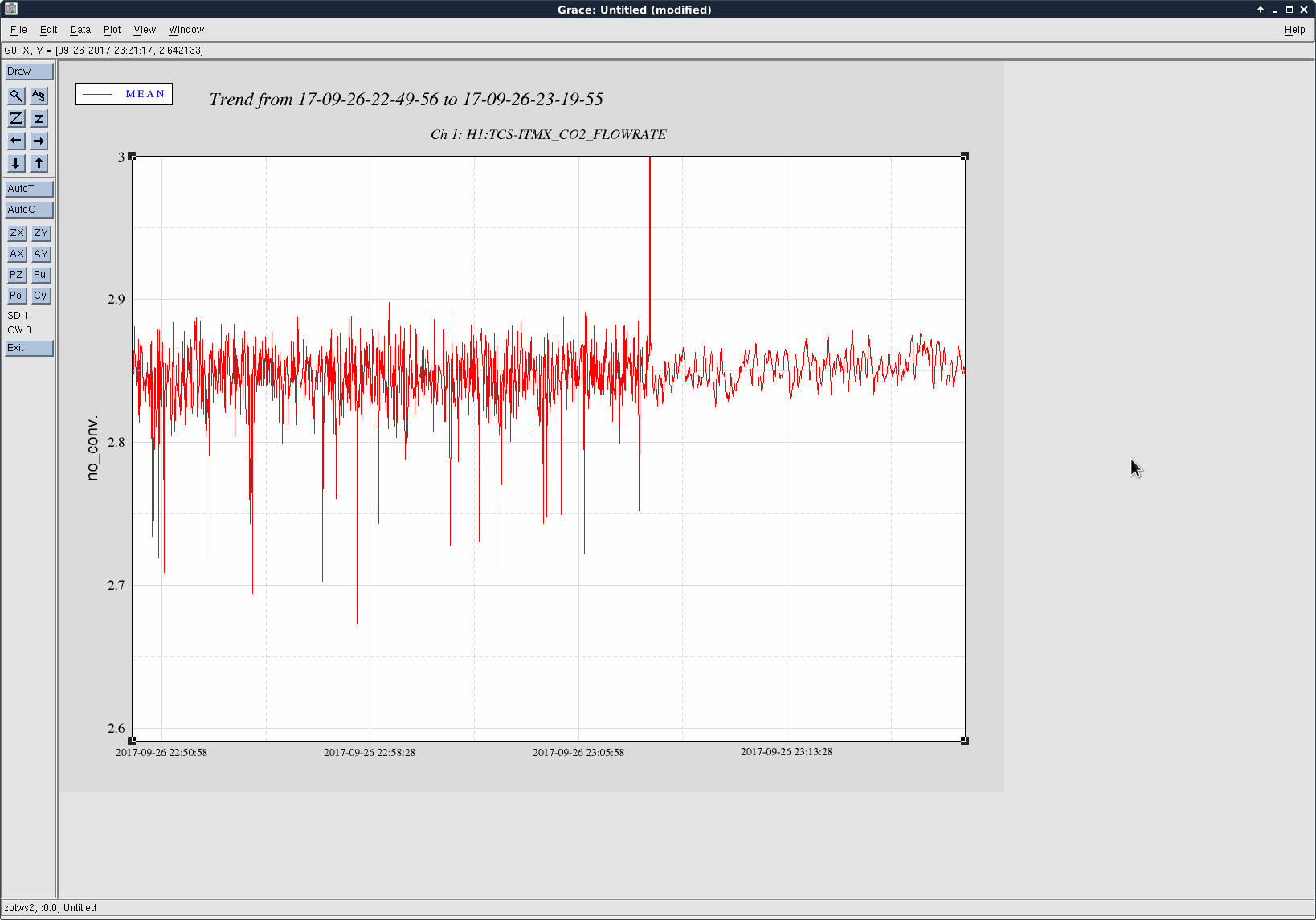LHO TCS maintenance tasks (day 3) per T1700136:
- Synchronize Guardian between sites [AH]:
- Automated heating beam profiling [AH]:
Investigate glitching H1CO2Y flow meter [AB/AH]:(see aLOG 38811)Install flipper mirrors and annular heating beam masks [AB/AH]:(see aLOG: 38812)- Make CO2 power cable feedthrough more rigid
- Install summing chassis
- Update operating system to Debian for HWS. Start with ETM HWS
Add HWS image viewer(see aLOG 38774)Clean up TCS MEDM screens(see aLOG 38774)Modify RH drivers to work as three wire RTDs (ITMX, ITMY, ETMY).(see aLOG 38785)Transfer spare CO2 RTDs to laser surface.(see aLOG 38806)Adjust flow rate sensor to have same settings at LLO - averaging set to 5s(CO2X see aLOG 38793, see aLOG 38809)- Add temperature estimate to ring heater in Beckhoff (measured resistance vs nominal resistance).






